 W
WPears are fruits consumed and produced around the world, growing on a tree and harvested in late Summer into October. The pear tree and shrub are a species of genus Pyrus, in the family Rosaceae, bearing the pomaceous fruit of the same name. Several species of pears are valued for their edible fruit and juices, while others are cultivated as trees.
 W
WPyrus amygdaliformis, also known as the almond-leaved pear, is a species of plant in the family Rosaceae. It is native to southern Europe, the Mediterranean, and west Asia. It grows to a height of 3–10 metres (9.8–32.8 ft). It has white flowers which bloom in April–May. The fruits are bitter and astringent. It hybridizes well with Pyrus communis and Pyrus pyraster.
 W
WPyrus austriaca, the Austrian pear, is a species of flowering plant in the genus Pyrus found in central and southern Europe, and Turkey. They are very large trees for pears, reaching 20 m. It is thought to be a hybrid species of Pyrus pyraster and Pyrus nivalis.
 W
WPyrus bourgaeana, the Iberian pear, is a close relative of Pyrus communis L. The last was domesticated about 2500 years ago. This monoecious small tree is widely distributed across the southern Iberian Peninsula and northern Morocco, where it coexists with four Pyrus species: P. communis L., P. cordata Dew., P. spinosa Forssk, and P. nivalis Jacq. Characteristics to discriminate these species are the width of fruit peduncle, petal size, leaf width and petiole length served to the taxa.
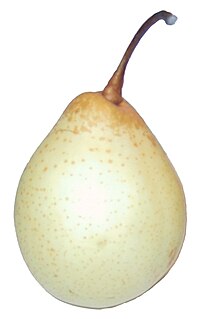 W
WPyrus × bretschneideri, the ya pear or pearple or Chinese white pear, is an interspecific hybrid species of pear native to North China, where it is widely grown for its edible fruit.
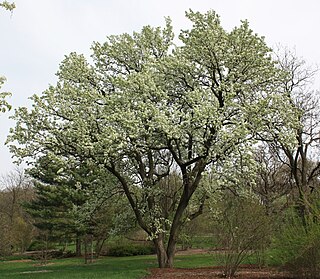 W
WPyrus calleryana, or the Callery pear, is a species of pear tree native to China and Vietnam, in the family Rosaceae. It is most commonly known for its cultivar 'Bradford', widely planted throughout the United States and increasingly regarded as an invasive species.
 W
WPears are fruits consumed and produced around the world, growing on a tree and harvested in late Summer into October. The pear tree and shrub are a species of genus Pyrus, in the family Rosaceae, bearing the pomaceous fruit of the same name. Several species of pears are valued for their edible fruit and juices, while others are cultivated as trees.
 W
WPyrus communis, known as the European pear or common pear, is a species of pear native to central and eastern Europe and southwest Asia.
 W
WThe Cubbington Pear Tree was a wild pear tree located near to Cubbington in Warwickshire, England. Around 250 years old, it was the second largest wild pear tree in the country and a noted local landmark. In 2015 the tree was voted England's Tree of the Year. A Parliamentary petition was launched in September 2020 to save the tree from being cut down for HS2 and a month later had over 20,000 signatures triggering an official government response. It was felled as part of the High Speed 2 railway development on 20 October 2020.
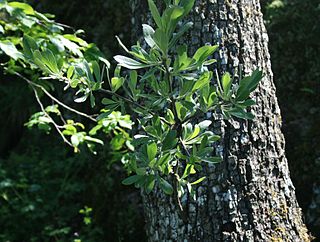 W
WPyrus elaeagrifolia, the oleaster-leafed pear, is a species of wild pear plant in the genus Pyrus (Rosaceae), the specific name referring to the similarity of its foliage to that of Elaeagnus angustifolia - the so-called 'wild olive' or oleaster.
 W
WThe Endicott Pear Tree, also known as the Endecott Pear, is a European Pear tree, located in Danvers, Essex County, Massachusetts. It is believed to be the oldest living cultivated fruit tree in North America.
 W
WPyrus nivalis, commonly known as yellow pear, is a species of tree in the family Rosaceae that grows naturally from south-east Europe to western Asia. Like most pears, its fruit can be eaten raw or cooked; it has a mild sour taste. The plant is very colorful and may grow to a height of up to 10 meters and a width of about 8 meters. It is a very hardy plant that is able to withstand a small supply of water or very high or low temperatures. It may hybridize with other pears, producing, for example, Pyrus austriaca in a cross with Pyrus pyraster.
 W
WPyrus pashia, the wild Himalayan pear, is a small to medium size deciduous tree of the small and oval shaped crown with ovate, finely toothed leaves, attractive white flowers with red anthers and small pear-like fruits. It is a fruit bearing tree that is native to southern Asia. Locally, it is known by many names such as batangi (Urdu), tangi (Kashmiri), mahal mol (Hindi) and passi (Nepal).
 W
WPyrus pyraster, also called European wild pear, is a species of pear of the family Rosaceae.
 W
WPyrus pyrifolia is a species of pear tree native to East Asia. The tree's edible fruit is known by many names, including: Asian pear, Japanese pear, Chinese pear, Korean pear, Taiwanese pear, apple pear, zodiac pear, three-halves pear, papple and sand pear. Along with cultivars of P. × bretschneideri and P. ussuriensis, the fruit is also called the nashi pear. Cultivars derived from Pyrus pyrifolia are grown throughout East Asia, and in other countries such as India, Australia, New Zealand, and the United States. Traditionally in East Asia the tree's flowers are a popular symbol of early spring, and it is a common sight in gardens and the countryside.
 W
WPears are fruits consumed and produced around the world, growing on a tree and harvested in late Summer into October. The pear tree and shrub are a species of genus Pyrus, in the family Rosaceae, bearing the pomaceous fruit of the same name. Several species of pears are valued for their edible fruit and juices, while others are cultivated as trees.
 W
WPyrus betulifolia, known as the Birchleaf pear in English and Tang li in Chinese, is a deciduous wild pear tree native to the leafy forests of northern and central China and Tibet. It can grow 10 meters high in optimal conditions. Formidable thorns protect its leaves from predation. These narrow and extended leaves, resembling smaller birch leaves, provide it with its specific name betulifolia, meaning "birch leaf". Its small fruit are used as ingredients in types of rice wine in China and sake in Japan. It is used as rootstock for grafting popular asian pear varieties.
 W
WPyrus salicifolia is a species of pear, native to the Middle East. It is widely grown as an ornamental tree, almost always as a pendulous cultivar, and is called by various common names, including willow-leaved pear, weeping pear, and similar. The tree is deciduous and of comparatively small stature, rarely reaching 10–12 meters in height. The crown is rounded. It has pendulous, silvery foliage, superficially similar to a weeping willow. The flowers are large and pure white highlighted with black-tipped stamens although the buds are tipped with red. The small green fruits are inedible, being hard and astringent.
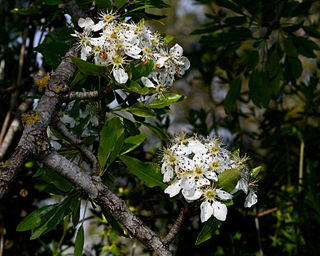 W
WPyrus syriaca is a deciduous tree in the Rosaceae family. It is referred to by the common name Syrian pear. It is the only pear species which grows in the wild in Lebanon, Turkey, Syria and Israel.
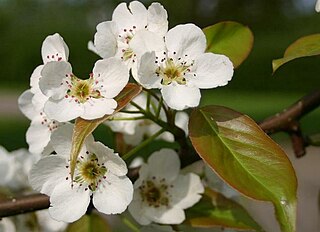 W
WPyrus ussuriensis, also known as the Ussurian pear, Harbin pear, and Manchurian pear, is a species of flowering plant in the family Rosaceae.